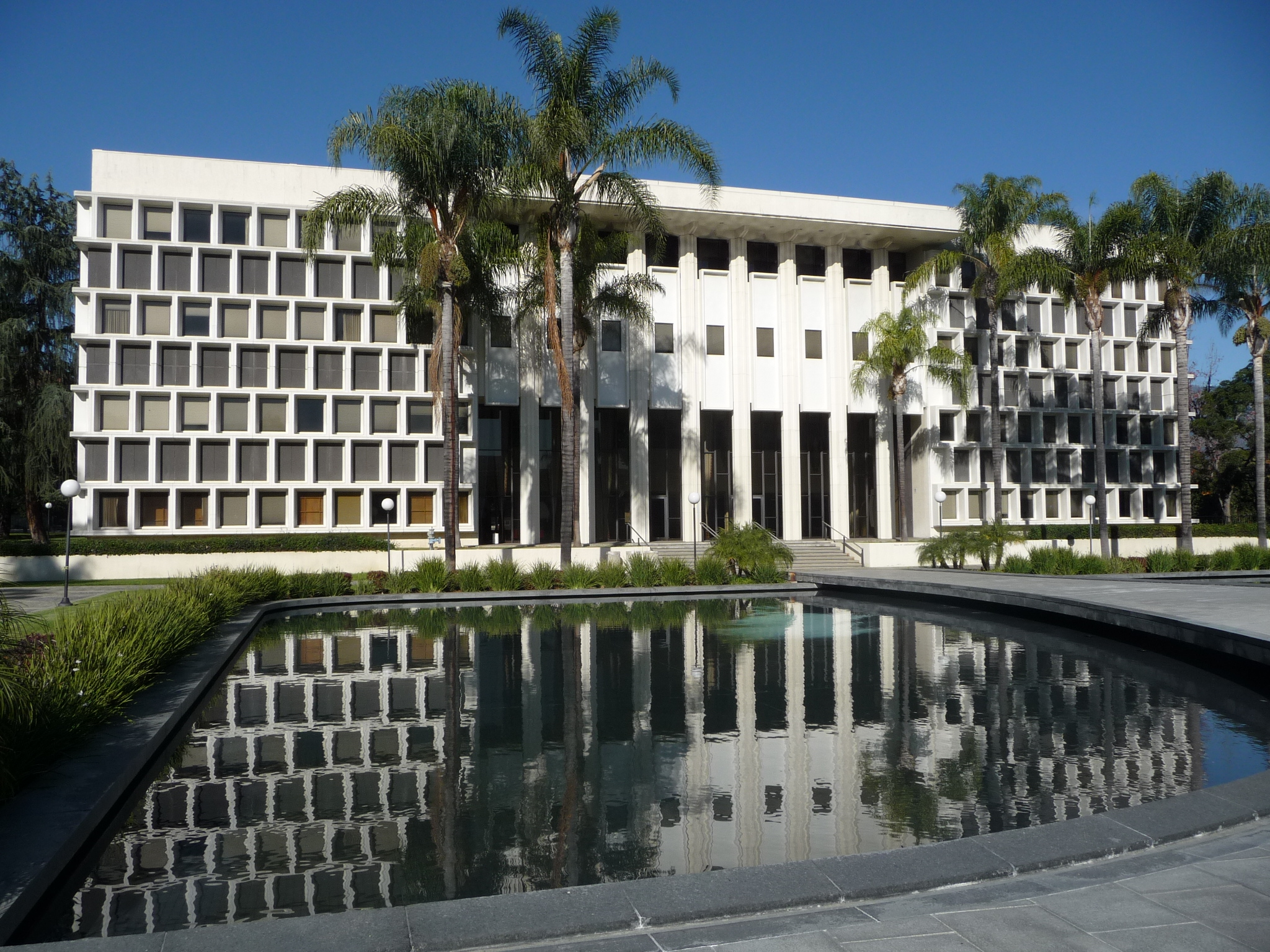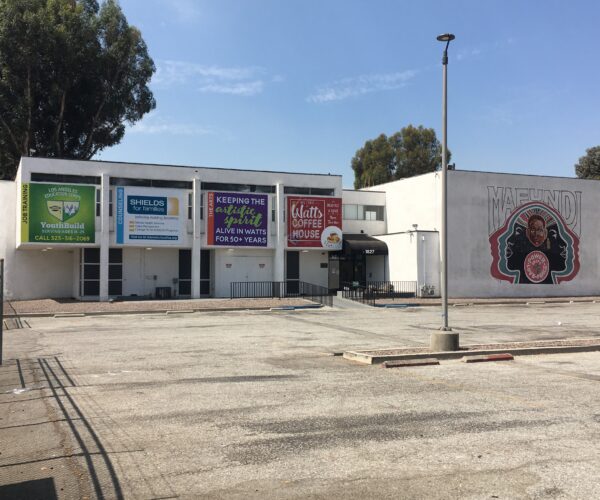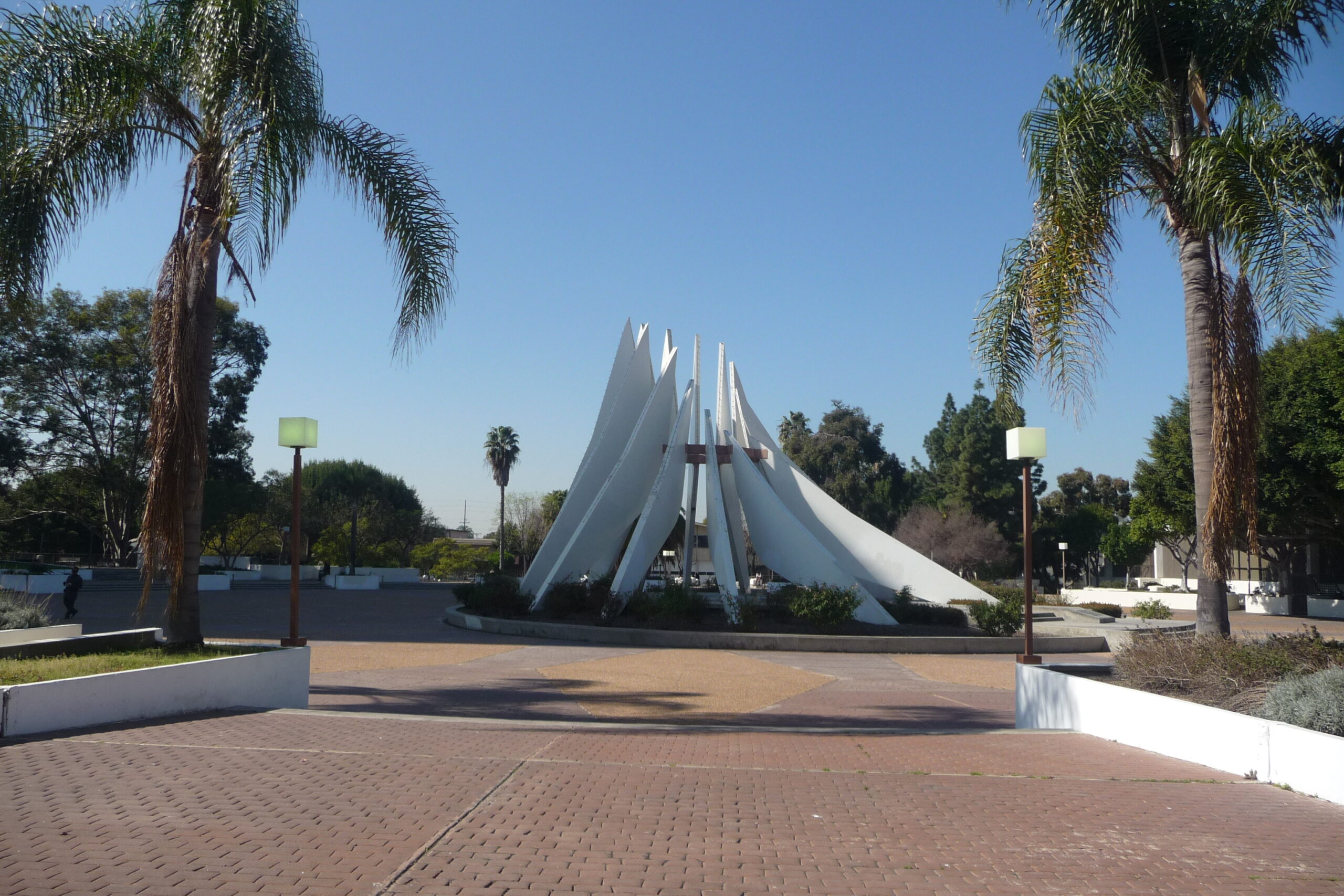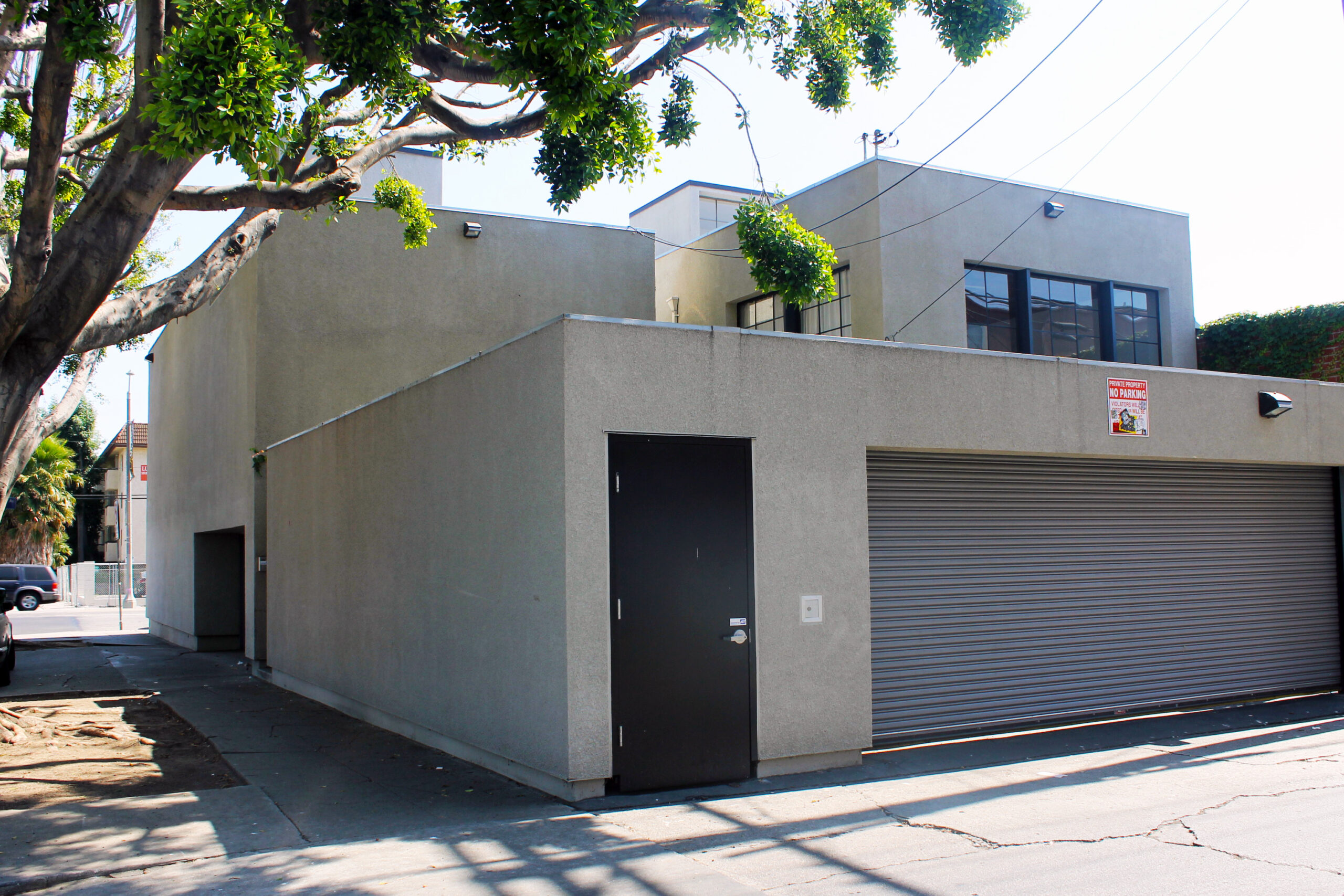
Place
Ambassador College
A wide array of diverse architectural styles dating from 1905 to the 1970s, all the buildings make sense together thanks to a cohesive master plan and strong landscape design.
Place Details
Address
Get directions
Architects
Year
Style
City
The campus of Pasadena’s Ambassador College contains a wide array of diverse architectural styles dating from 1905 to the 1970s, but all of the buildings somehow make sense together thanks to a cohesive master plan and strong landscape design. Herbert W. Armstrong, the leader of the Worldwide Church of God, consolidated multiple lots within a four-block area to fulfill his vision of Ambassador College as his church headquarters. The property already contained a number of grand mansions from the early twentieth century, but Armstrong wanted a more modern, yet timelessly classic, feel for his campus. He hired Daniel, Mann, Johnson, and Mendenhall (DMJM) in 1963 to come up with a master plan and dream up new modern buildings to fit his vision. Architect Peter J. Holdstock of the O. K. Earl Corporation designed most of the new buildings, using bold sculptural elements like perforated concrete screens to add visual interest to the clean Late Modern lines. Armstrong also commissioned distinguished landscape architect Garrett Eckbo to design a unified campus landscape. The results were more than successful.
Today, Ambassador College stands as an icon of groundbreaking campus design, especially renowned for its landscape and its Late Modern buildings like Ambassador Auditorium and the Fine Arts and Science Halls.
The Fine Arts and Science Halls are mirror images of each other at the campus’ west end. Completed in 1967, each is a simple rectangular box in plan, with a recessed, dark tile-clad first floor topped by a dramatic white concrete shell of honeycomb-like geometric forms. Their deeply recessed entrances face each other across a plaza of brick and concrete steps that connects a sparkling fountain at one end to an older Greek Revival building at the other. Carefully sculpted hedges and trees in concrete planters soften some of the sharp edges. At the other end of campus, Ambassador Auditorium stands tall in a reflecting pool, a Modern interpretation of a Greek temple.
Upon its completion in 1974, the auditorium joined two neighboring buildings: the brick and concrete Student Center (1965) and the geometric screen-skinned Hall of Administration (1967). Its recessed main volume of steel and dark glass curtain walls stands under the shelter of a flat overhanging roof supported by tall concrete columns, creating a colonnade that encircles the entire building. The three buildings are united by a common landscape with low intersecting bridges over the enormous reflecting pool, and the auditorium’s entrance is punctuated by David Wynne’s sculpture of bronze egrets in flight. Allees of palm trees lead to this New Formalist complex and connect it to the older portions of campus up a slope to the west.
Eckbo’s landscape design ties everything together, combining a number of historical styles to complement the campus’ wide-ranging architecture. It integrates disparate elements from formal Victorian gardens, Japanese gardens, and spare Modern hardscapes, each flowing seamlessly into the other. The College moved to Texas in 1997, leaving its breathtaking campus behind. Parts of it are currently occupied by Maranatha High School and Harvest Rock Church, while other buildings lie boarded up and unused. Even when deserted, the Ambassador College campus is a breathtaking collection of styles spanning most of the twentieth century, united by the harmonious spaces in between.


